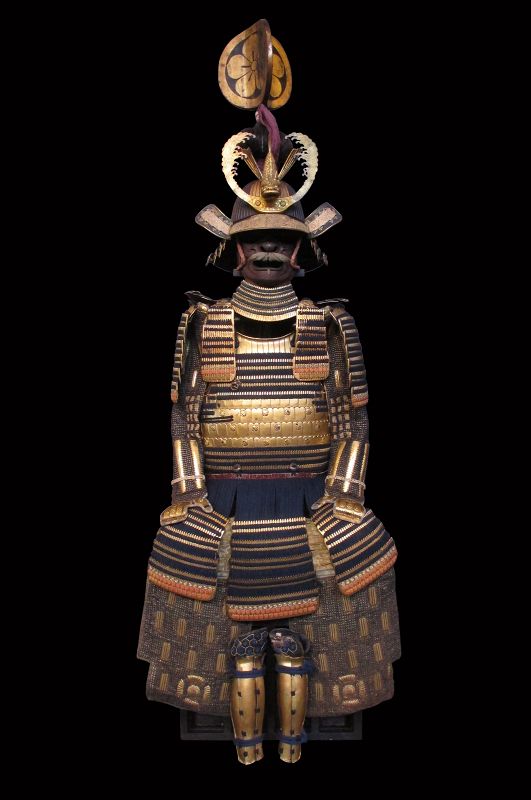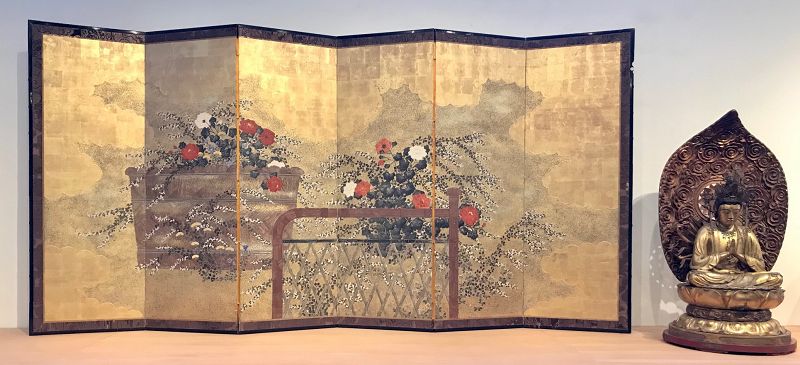Japanese Gold Gilt Samurai Armor with Dragon Fish Maedate
Antique Japanese Yokohagi Okegawa Dō samurai armor of the Edo Period (early 19th century). The kabuto (helmet) is of 64 ken plate construction with a dramatic maedate in the form of a dragon fish flanked by cresting waves. As the story tells, the gods took notice of a koi fish who was trying to swim up a waterfall, rewarding its perseverance by changing it into a dragon. The dragon fish became a symbol of strength and determination in the face of an uphill battle - an appropriate symbol for a samurai warrior.
The mempo is in the Nara style. The kiritsuke sode (shoulder shield) is laced in a navy blue and coral color silk. The silk lacing is consistent for the entire armor and in overall excellent condition. There is much use of pushed-gold lacquer overall.
The kote and haidate are made of chainmail and accented with gilt iron ikada that match the tekō hand coverings. The sunsate shinguards are made with 5 hon plates.
The armor is presented on a black lacquered wooden hitsu traveling box with cage.
Paired with an Edo Period gold an black lacquered uma-jirushi with horsehair tassel. These mounted flags used in feudal Japan to identify a daimyō or equally important military commander on the field of battle. They came into prominence during the Sengoku period.
The ō-uma-jirushi )Shown with armor is Sold) was the nucleus of action on the battlefield, and while it aided the organization and morale of friendly troops, it also attracted the attention of enemy warriors. The carrier of the uma-jirushi, therefore, was arguably the most dangerous / prestigious position to be in on the field of battle.
Age: Edo Period (Early 19th Century)
Dimensions of armor display: 60" high (not including standard) x 26" wide x 21" deep.
https://zentnercollection.com/product/japanese-gold-gilt-samurai-armor-with-dragon-fish-maedate/


